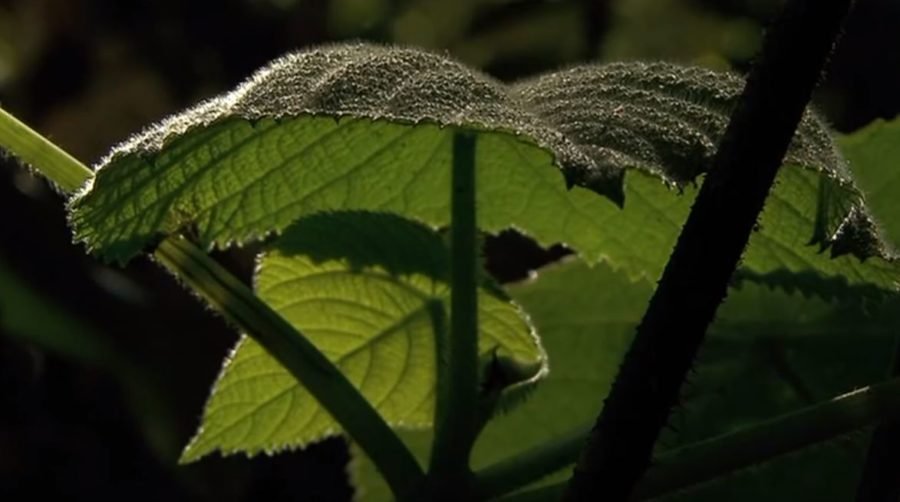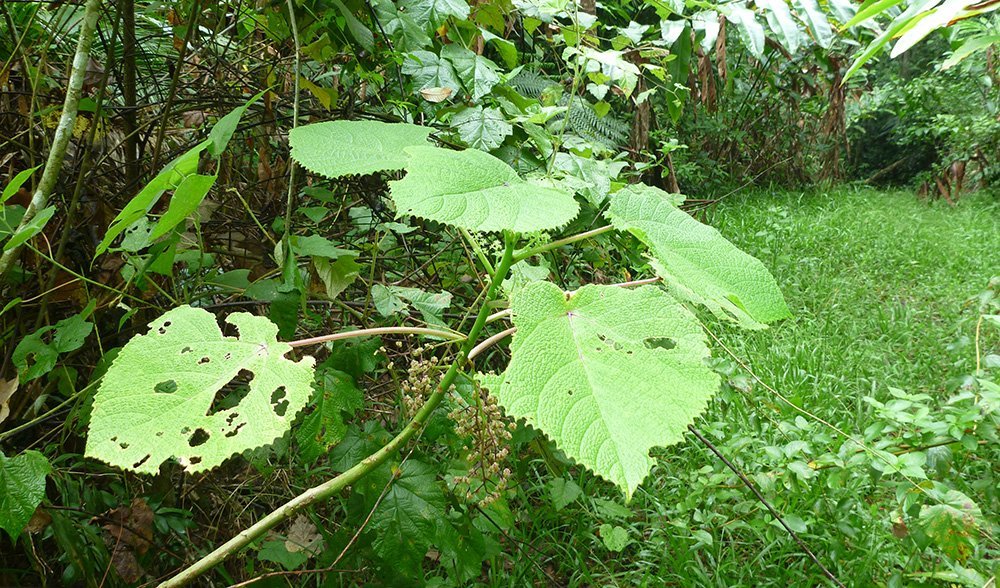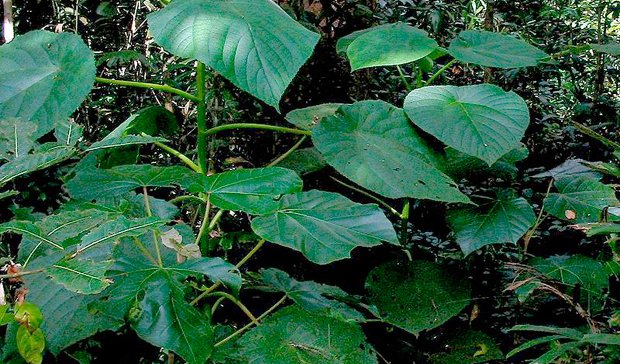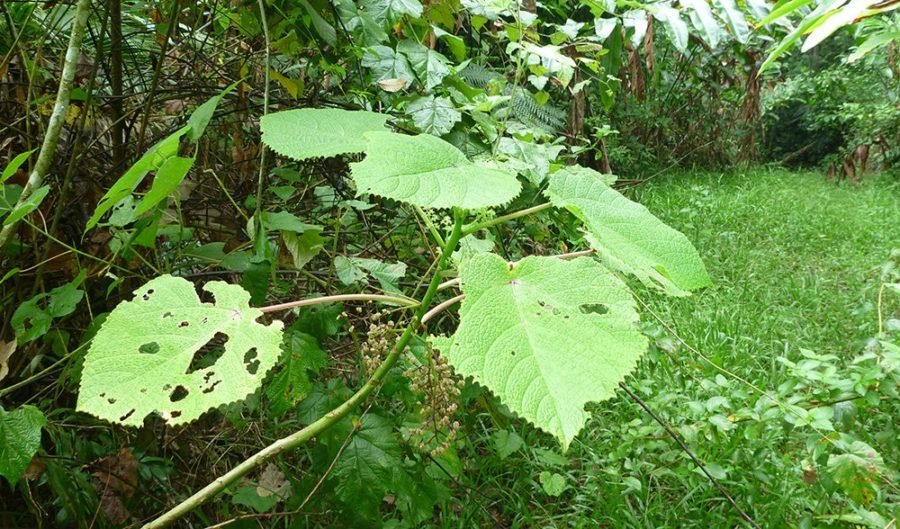Gympie-Gympie: Once stung, never forgotten

Marina Hurley’s dedication to science was sorely tested during the three years she spent in Queensland’s Atherton Tableland studying stinging trees. The entomologist and ecologist’s first encounter with the Gympie-Gympie stinging tree produced a sneezing fit and left her eyes and nose running for hours. Even protective particle masks and welding gloves could not spare her several subsequent stings – one requiring hospitalisation – but that was nothing compared with the severe allergy she developed.
“Being stung is the worst kind of pain you can imagine – like being burnt with hot acid and electrocuted at the same time,” said Marina, who at the time was a postgraduate student at James Cook University investigating the herbivores that eat stinging trees.
“The allergic reaction developed over time, causing extreme itching and huge hives that eventually required steroid treatment. At that point my doctor advised that I should have no further contact with the plant and I didn’t object.”

Marina is not alone in her allergic reaction to this innocent-looking plant – one of six stinging-tree species found in Australia, and one of the most poisonous plants here – or her dramatic accounts.
Proliferating in rainforest clearings, along creek-lines and small tracks, the Gympie-Gympie stinging tree (Dendrocnide excelsa) has long been a hazard for foresters, surveyors and timber workers – some of whom are today supplied with respirators, thick gloves and anti-histamine tablets as a precaution. More recently, the hairs covering the plant’s stems, leaves and fruits have also posed a danger to scientists and bushwalkers.
Gympie-Gympie stinging tree history
North Queensland road surveyor A.C. Macmillan was among the first to document the effects of a stinging tree, reporting to his boss in 1866 that his packhorse “was stung, got mad, and died within two hours”. Similar tales abound in local folklore of horses jumping in agony off cliffs and forestry workers drinking themselves silly to dull the intractable pain.
Writing to Marina in 1994, Australian ex-serviceman Cyril Bromley described falling into a stinging tree during military training on the tableland in World War II. Strapped to a hospital bed for three weeks and administered all manner of unsuccessful treatments, he was sent “as mad as a cut snake” by the pain. Cyril also told of an officer shooting himself after using a stinging-tree leaf for “toilet purposes”.
He’s had too many stings to count but Ernie Rider will never forget the day in 1963 that he was slapped in the face, arms and chest by a stinging tree. “I remember it feeling like there were giant hands trying to squash my chest,” he said. “For two or three days the pain was almost unbearable; I couldn’t work or sleep, then it was pretty bad pain for another fortnight or so. The stinging persisted for two years and recurred every time I had a cold shower.”
Now a senior conservation officer with the Queensland Parks and Wildlife Service, Ernie said he’s not experienced anything like the pain during 44 years work in the bush. “There’s nothing to rival it; it’s 10 times worse than anything else – scrub ticks, scrub itch and itchy-jack sting included. Stinging trees are a real and present danger.”

Stings like acid
So swollen was Les Moore after being stung across the face several years ago that he said he resembled Mr Potato Head.
“I think I went into anaphylactic shock and it took days for my sight to recover,” said Les, a scientific officer with the CSIRO Division of Wildlife and Ecology in Queensland, who was near Bartle Frere (North Peak) studying cassowaries when disaster struck.
“Within minutes the initial stinging and burning intensified and the pain in my eyes was like someone had poured acid on them. My mouth and tongue swelled up so much that I had trouble breathing. It was debilitating and I had to blunder my way out of the bush.”
It was perhaps this rapid and savage reaction that inspired the British Army’s interest in the more sinister applications of the Gympie-Gympie stinging tree in 1968. That year, the Chemical Defence Establishment at Porton Down (a top-secret laboratory that developed chemical weapons) contracted Alan Seawright, then a Professor of Pathology at the University of Queensland, to dispatch stinging-tree specimens.
“Chemical warfare is their work, so I could only assume that they were investigating its potential as a biological weapon,” said Alan, now an honorary research consultant to the University of Queensland’s National Research Centre in Environmental Toxicology. “I never heard anything more, so I guess we’ll never know.”



